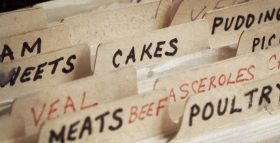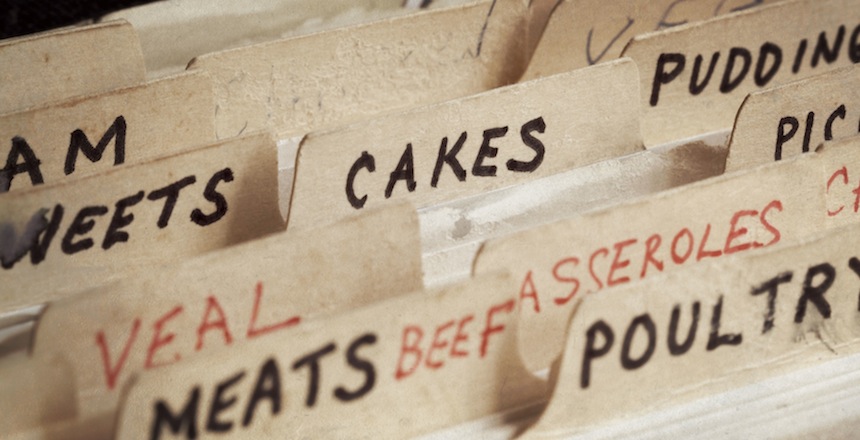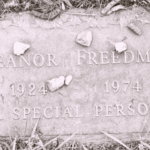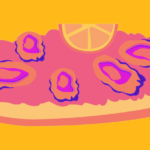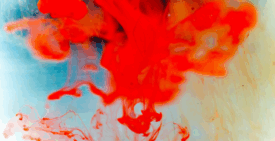In the end, when the people we love are gone, sometimes all we have left are breadcrumbs.
These breadcrumbs — tiny glimpses into the lives they led when they were here — lead back to a place in time, when we were together and healthy and happy. I’m quite certain this is that space they’re referring to, when folks so often long for “simpler times.”
Sometimes when I am in the pharmacy by myself waiting for a prescription, I wander over to the skincare aisle and there on the shelf is a tiny crumb disguised as a jar of Pond’s Cold Cream. I pick it up and carefully unscrew the top and inhale. Instantly, I am in my childhood bathroom. It is nighttime and my mother is getting herself ready for bed. In one whiff, I am there and she is here.
I call them crumbs because they aren’t much, really. And who and what the people we love leave behind are so much bigger than this. But they tug at the senses, and beat a trail back to the past in a way that often leaves me breathless. They are equal parts painful and calming.
Related
My mother’s recipes are central in my never-ending search for these crumbs in the years following her death. There is something about the weathered feel of the more loved index cards, the loops and dips of her signature cursive/print hybrid scrawl, the spatter and smudge of gastronomic pleasures tried and true and failed. I love reading and looking through them. The way she would go back and annotate each one after trying it: use less oil, add more of this and that. Long before we looked to the Facebook page or personal blog to offer a window into our family lives, there were well-loved recipe cards.
There is something different about handwriting that makes it in some ways the most prized breadcrumb of all. Perhaps it is the idea of knowing that no one ever has and will ever again make anything that looks exactly like this. We can be alike in so many ways, but our signature is always our own. Maybe because when you pick up something that was written by someone you loved and lost, you can imagine them holding that very same letter or recipe card in their hand, pressing pen to paper. She was there and now you are. You both touched it. You can’t touch each other now, but you can travel the same space.
Indeed writing something down, regardless of what it is, can be a transformative experience. Science increasingly proves that it is the writing of information, not the typing, that promotes a space in our brain that lends more to the processing and interpretation of information, not just the recording of it.
And perhaps this is why the words on these cards matter so much. I’m not just reading letters on a page. I know that tucked within the spaces of that card are pieces of my mother’s heart, her mind. When there is nothing to hold on to, I can still find her in these tiny crumbs tucked between the lines.
It’s a chilly afternoon, the first Sunday of November. The Jets are on in the background and it’s the kind of day that practically begs for a fire in the fireplace and mulling spices and something warm and hearty, like stew. I flip through a bunch of old recipes. But this time I stumble upon an old recipe card that is clearly not written in my mother’s signature handwriting. It is for veal stew, and has the name Blanche written in parentheses at the top.
For months now I’d been staring at that recipe waiting for just the right dip in Fahrenheit to attempt it. I had assumed the handwriting was that of a longtime family friend of my grandmother, but as I look at it again this afternoon, it occurs to me that it is my grandmother’s handwriting and the she just had written this name at the top, perhaps to let my mother know where it came from before she passed it along.
You should use a little less flour than is called for and make sure to finely mince the garlic. The onions must be sliced. If you care for it, you can add some mushrooms or green pepper in at the end. In her words and writing, I can imagine her in her kitchen, cooking, tweaking, preparing. I feel her in the slants and curves in the letters. In the way she felt it was important to remember that it was Blanche whom she got the recipe from, in the red wine smudge at the bottom of the card.
Hours later we gather around the table. The children are, as usual, picky and hesitant. But Phil and I greedily fill our bowls. I finely mince some of the meat and serve it to the baby. Of everyone at the table, she is its most vocal advocate, grabbing it up and asking for more. The meat is tender and the sauce is thick: not too runny or clumpy. I smile. Of course you were right, grandma. A little less flour will do just fine. And in one bite, I am having a conversation with her. Much more than time and space separate us, but she helps me feed my daughter.
I follow the crumbs of this recipe back to a time when we, my mother, my grandmother and I once sat around a table much like this one, all together. With each bite, I feel nourished.
Jennifer Meer is a mother and writer, living and working in Connecticut. Her writing has been featured in a number of online publications including The Huffington Post, Scary Mommy, Kveller and The Stir. You can learn more at my-jenneration.blogspot.com and follow her on Twitter @JennMeer.

